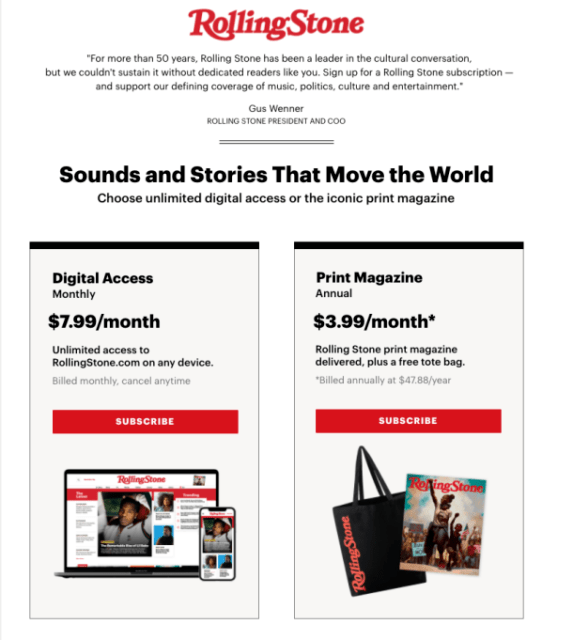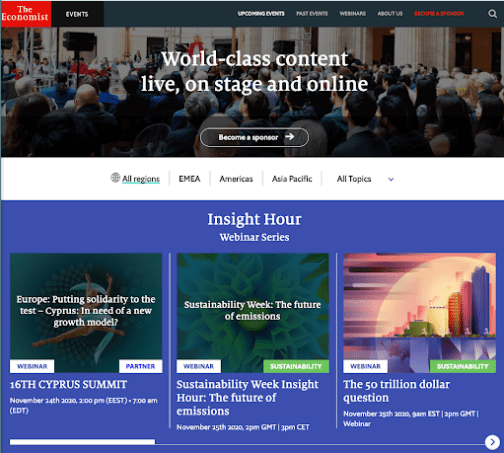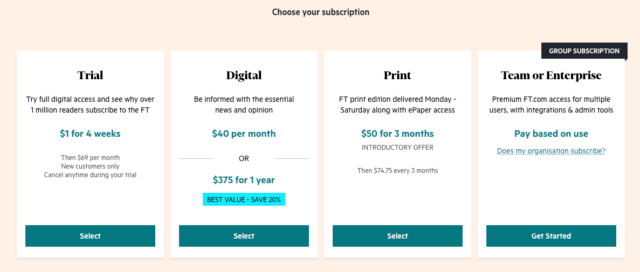10 Digital Publishing Strategies to Grow Subscription Revenue
With advertising revenue on a precipitous decline, media companies are looking to their subscribers to revitalize the topline.
As the media industry has moved online over the past two decades, the internet advertising model quickly became the mainstay for generating revenue. But year-over-year, the internet advertising market is shrinking; We saw a drop from $125B in 2019 to $121B in 2020.
And not only are advertisers spending less, consumers are figuring out how to avoid ads altogether: 80 million people will use ad blockers this year, costing advertising companies $10B in revenue. With the evolution of the online world, every media company is considering ways to make up for dwindling advertising revenues (which has only been exacerbated by the global pandemic) with recurring revenue strategies.
Savvy media companies are returning to their roots: subscriptions. Because, while advertising numbers are unpredictable, the consumer appetite for digital content continues to grow. In 2020, digital newspaper circulation revenue grew 10% year-over-year, and in the United States 43% of consumers say they are willing to spend more on their current media subscriptions.
Subscription revenue brings more business stability, which in turn enables more investment in content and user experience. But diversifying advertising revenue with subscription revenue isn’t as straightforward as you might think.

Legacy infrastructure stands in the way of business model transformation
While the need for media companies to diversify revenue streams by expanding and monetizing the subscriber base is clear, the best strategy to do so is anything but. The primary culprit? Publishing companies are frequently saddled with legacy infrastructure for subscription management.
These legacy systems, often homegrown or outsourced to a thirdparty provider, have fundamentally limited technical resources. They are not built to monetize new digital content (and other complementary offers) or harvest insights on their subscriber base. They lack the sophisticated tools needed to reduce churn. And they don’t have the ability to scale as product and pricing options proliferate to meet the demands of the market.
Publishing companies that attempt to customize their existing systems built for physical print end up piling on maintenance costs and placing unbearable pressure on internal resources, which become consumed with troubleshooting antiquated and homegrown processes.
The three most common challenges are:
-
Barriers to Experiment with Content Monetization Strategies
Media companies need to experiment with new digital strategies to convert and monetize subscribers. These include free trials and promotions, bundles, memberships, gifting, and more. However, spinning up new monetization strategies can be unworkable when changes need to be hard coded in the legacy system, and can’t flow through acquisition channels and markets.
-
Lack of Subscriber Insights to Uncover Opportunities
Subscriber data and insights are critical to be able to tailor upsell, cross-sell, and winback campaigns to increase subscriber lifetime value. Legacy systems don’t provide metrics to measure go to market effectiveness and trends overtime.
-
Loyal Subscribers Churning without Payment Automation
High volumes of subscribers with diverse payment options present more chance of errors and therefore greater passive churn risk. Antiquated architectures don’t support diverse payment options. And without more sophisticated automated collection processes in place, legacy systems experience consistent revenue leakage.

10 strategies used by top publishers
At Zuora, we have worked with thousands of companies as they transitioned to a digital subscription model. Our portfolio includes 21 major publishing groups worldwide. We’re proud of their success; the companies we’ve helped to diversify their advertising revenue streams with agile subscription offerings have grown 10-12% year over year. With our help, these companies have employed strategies that reduced involuntary churn and improved credit card collections rates by 100%. Some or all of these strategies could help any publishing company successfully transition to a digital subscription model.
-
Create Compelling Plans and Bundles to Grow Acquisition
By tailoring your plans and bundles and measuring their success, you can determine the best ones to grow acquisition. When it comes to new plans and bundles you can create these on any schedule whether that’s daily, weekly, monthly, or annual plans.

-
Offer Promotions and Trials to Convert Free to Paid Subscribers
Promotions and trial periods allow you to gain interest immediately and then fade discounts over time. The Times of London utilizes this strategy, offering a free trial component for both of their subscription plans. Take their “Digital” offer, which provides one month free trial and then 10 Euro per month thereafter.
-
Introduce New Titles To Diversify Revenue
In addition to subscriber acquisition, publishing companies look for ways to diversify and grow revenues. These companies have branched out from traditional content into other product lines, including events, memberships, and even household items. The Economist hosts over 80 events annually across 30 countries that bring in revenue from sponsorships and registrations

-
Provide Subscriber with Self-Service Options to Allow Them to Manage Their Subscriptions in the Way They Choose
Throughout the subscriber lifecycle, changes are not only inevitable but also highly desired. Giving subscribers the freedom to manage their subscription can reduce churn. Subscribers may want to upgrade, downgrade, renew, or cancel; many publishing companies allow their subscribers to do this through a self-service channel. Providing the ability for subscribers to suspend and resume subscriptions (instead of going straight to “cancel”) can also be a meaningful strategy for mitigating churn over time. The Telegraph allows subscribers to manage downgrades and cancellation within their online account. And The Guardian allows subscribers who need a break to pause their print subscription for up to five weeks or six issues depending on subscription type.
-
Offer Subscription Gifting To Expand Their Readership
Subscriptions are the gift that keeps on giving and they give news and publishers an opportunity to capture new readership. The Seattle Times has capitalized on this strategy and successfully built out their subscriber-based revenue model by offering various bundled packages and the ability to transfer ownership for gifting purposes.

WEBINAR
Create a Winning Good Better Best Pricing Strategy
While pricing and packaging is one of the most powerful mechanisms to capture new customers, it is also the area that requires the most significant change in mindset. To help, we have developed a 3D Pricing and Packaging (P&P) Framework, embedded in real life examples, specific guidance, and benchmarks.
-
Grow Subscriber Base with Corporate Memberships
Corporate memberships present the opportunity for a new revenue stream for news and publishers. For businesses, many publications offer plans to suit the needs of large teams. The Financial Times offers three B2B plans, including one for “Enterprise” that provides admin tools and single sign on.

-
Ensure Compliance and Expand Into International Payments
Payments and payment processing are critical to publishing companies serving a large number of subscribers, oftentimes globally, while also managing various payment methods. The most important component of this is offering your subscribers secure payment method capture, while also supporting seamless integration with payment gateway providers specific to each region. For their house of brands, Schibsted offers a diverse set of payment options to help reduce friction again geographies — one of many strategies that helped this global media company based in Norway to double their income from digital subscriptions in less than 2 years time.
-
Grace Periods for Nonpayment
To extend your payment period to prevent subscriber churn, publishing companies can offer grace periods for subscribers, allowing you to continue services for a specified amount of time. After the designated period is up, subscriptions will be canceled or suspended until a payment is made. Subscribers of the Raleigh News & Observer will have subscriptions be extended for a limited time (grace period) after the expiration date.
-
Prevent Revenue Leakage with Personalized Payment Retry
Being able to collect on credit card payments and recover missed payments can drastically reduce churn. By having automated collections processes, the Yellow Pages prevents revenue leakage from happening.
-
Make More Informed Customer Service and Marketing Decisions with Subscription Analytics
As you measure the success of your offers, subscriber behavior, and how your content is resonating with your audience, you also need to measure the performance of your subscription business. The ability to measure the health of your subscription business with key subscription metrics like Net Retention Rate, Monthly Recurring Revenue, Subscriber Churn, and more allows you to make more informed customer service and marketing decisions. Penske Media Corporation (PMC) uses their subscription management system to see customer data in real time, straight out of the box, including subscription term, billing period, credit card, churn reports, etc.